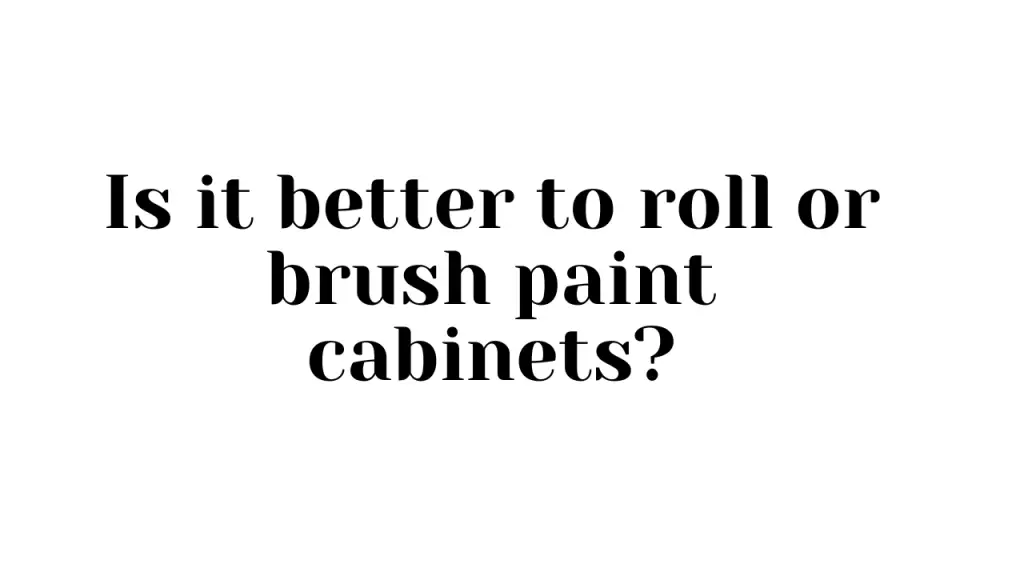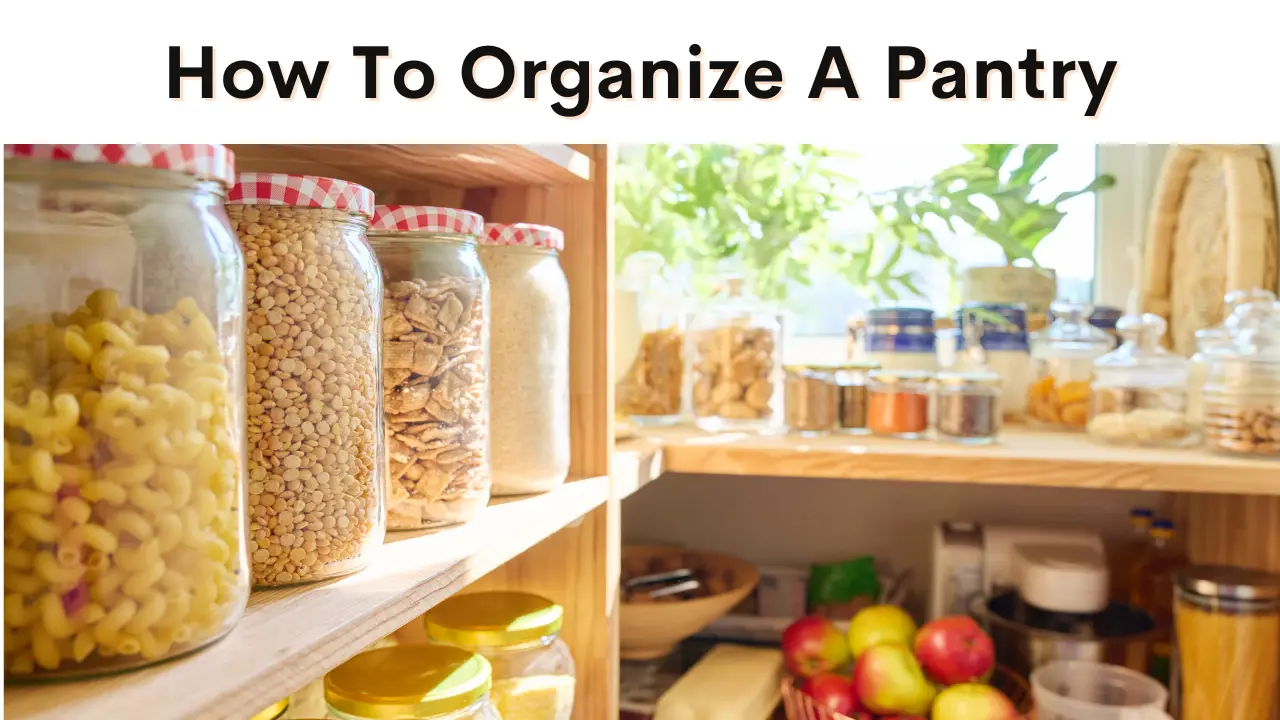Is it Better to Roll or Brush Paint Cabinets? Are you considering giving your cabinets a fresh coat of paint but unsure whether to roll or brush?
This article will help you make an informed decision by exploring the pros and cons of both methods.
Whether you’re a DIY enthusiast or a professional painter, it’s essential to understand the advantages and drawbacks of each technique to achieve the best results for your cabinets.
In the first section, we will discuss the pros and cons of rolling cabinets. Rolling cabinets can be a time-efficient method, allowing you to cover larger areas quickly. It provides a smooth and consistent finish, especially when using a foam roller. However, rolling cabinets may require more coats of paint to achieve full coverage, and it can be challenging to reach corners and detailed areas. By weighing these factors, you can determine if rolling is the right approach for your cabinets.
Is it Better to Roll or Brush Paint Cabinets?
It depends on the specific project and personal preference. Rolling is often faster and more efficient for larger cabinet surfaces while brushing allows for more precision in detail work. Ultimately, the choice between rolling and brushing for painting cabinets is subjective and contingent on the desired outcome.
Pros and Cons of Rolling Cabinets
Rolling cabinets can be a quicker and more efficient method, but it may result in a slightly less smooth finish compared to brushing. When you choose to roll paint on your cabinets, you can cover a larger area in less time. This method is particularly beneficial if you have a large number of cabinets to paint. Rolling also allows for better control over the thickness and evenness of the paint application. However, the finished result may not be as smooth as when using a brush. The roller can leave a texture on the surface, which may be visible up close. If you’re aiming for a flawless and sleek finish, brushing might be a better option.
When comparing rolling cabinets to brushing, the cost is another factor to consider. Rollers are generally more affordable than brushes, making them a more cost-effective choice. You can easily find rollers at your local hardware store at a reasonable price. On the other hand, brushes can be quite expensive, especially if you opt for high-quality ones. Additionally, rollers tend to hold more paint, allowing for better coverage and reducing the need for multiple coats. This can save you money on paint supplies in the long run. However, keep in mind that the cost of the paint itself can vary depending on the type and brand you choose.
Pros and Cons of Brushing Cabinets
When it comes to brushing cabinets, you’ll have better control and precision over the paint application. This allows you to achieve a smoother and more even finish, especially on intricate details and edges.
Additionally, brushing cabinets allow you to reach those hard-to-access nooks and crannies that might be missed with a roller.
However, it’s important to note that brushing cabinets can be a time-consuming process, as it requires multiple coats and careful attention to detail.
Better Control and Precision
For a more precise and controlled finish, it’s worth considering whether to roll or brush paint your cabinets.
When it comes to control and efficiency, brushing cabinets gives you the upper hand. With a paintbrush in hand, you have complete control over how much paint you apply and where you apply it. This allows for greater precision, especially when it comes to painting intricate details or edges.
You can easily navigate around hardware and trim, ensuring that every nook and cranny is covered with a smooth finish. Brushing also allows you to easily correct any mistakes or imperfections as you go, giving you the opportunity to achieve a flawless result.
In addition to control, brushing cabinets also offer the advantage of a smooth finish. When you use a paintbrush, you can apply thin, even coats of paint, resulting in a more professional-looking outcome. The bristles of the brush help to distribute the paint evenly, minimizing streaks or lines that may be left behind by a roller.
This method also allows you to work the paint into the wood grain, enhancing the natural beauty of your cabinets. With a brush, you can achieve a smooth, seamless finish that is both visually appealing and durable.
So, if you’re looking for the utmost control and a flawless, smooth finish for your cabinets, brushing is the way to go.
Reaching Nooks and Crannies
To truly achieve a flawless, professional finish, you’ll need to ensure that every intricate detail and hard-to-reach nook and cranny of your cabinets is covered. When it comes to reaching difficult areas, such as the corners and edges, using a brush provides better control and precision compared to a roller. The bristles of a brush can easily maneuver into tight spaces, allowing you to coat every nook and cranny with paint. On the other hand, when using a roller, it can be challenging to reach these areas, resulting in uneven coverage and missed spots.
To illustrate the difference between brush strokes and roller marks, let’s take a look at the following comparison:
| Brush Strokes | Roller Marks |
|---|---|
| Provides better control and precision | Can be challenging to reach corners and edges |
| Allows for easy coverage of intricate details | May result in uneven coverage |
| Can reach tight spaces and hard-to-reach areas | May miss spots and leave gaps |
As you can see, using a brush allows you to have more control over the application of paint, ensuring that every part of your cabinets is thoroughly coated. It enables you to reach difficult areas and cover them evenly, leaving no gaps or missed spots. So, when it comes to reaching nooks and crannies, using a brush is definitely the better choice for achieving a flawless finish.
Time-consuming Process
The process of reaching every nook and cranny with a brush can be quite time-consuming. It requires a lot of patience and precision to ensure that every corner, groove, and crevice is covered with paint. You have to carefully maneuver the brush into tight spaces, making sure not to miss any spots.
This meticulous process can take up a significant amount of your time, especially if you have a large number of cabinets to paint.
To evoke emotion in the audience, consider the following time-saving techniques:
- Use a small artist’s brush: This allows for more control and precision when painting small areas.
- Utilize a toothbrush: Yes, a toothbrush! It can be a handy tool for reaching those tiny, hard-to-reach crevices.
- Try a sponge brush: It can help you cover larger areas quickly and efficiently.
- Invest in a paint sprayer: This tool can save you a lot of time as it covers a larger surface area in a shorter amount of time.
- Consider using a paint additive: Some additives can help paint flow more smoothly, making it easier to reach every nook and cranny without spending excessive time on each cabinet.
By incorporating these time-saving techniques, you can make the process of reaching every nook and cranny with a brush more efficient and less time-consuming. This way, you can achieve a professional-looking finish without sacrificing hours of your precious time.
Additionally, if you’re looking to save even more time, you may want to consider painting your cabinets without sanding. There are products available that can adhere to the surface without the need for extensive sanding, further streamlining the painting process.
Factors to Consider
When considering whether to roll or brush paint cabinets, there are several factors you should take into account. One of the factors to consider is the time-saving techniques associated with each method. Brush painting cabinets can be a time-consuming process as it requires precision and attention to detail. Each cabinet door and surface needs to be carefully coated with paint using a brush, which can be a time-consuming task. On the other hand, rolling paint onto cabinets can be a quicker method as it allows for larger areas to be covered in a shorter amount of time. By using a roller, you can easily apply paint to the cabinet surfaces, saving you valuable time.
To further illustrate the factors to consider when deciding between rolling or brush painting cabinets, the table below provides a comparison of the two methods:
| Factors to Consider | Rolling Paint | Brush Painting |
|---|---|---|
| Time-saving | Quicker | Time-consuming |
| Precision | Less precise | More precise |
| Application | Even coverage | Requires skill |
| Tools needed | Roller, tray | Brushes |
| Finish quality | Smooth finish | Textured finish |
As you can see, rolling paint offers a quicker application process, but it may result in a less precise finish compared to brush painting. Brush painting, on the other hand, requires more time and skill but can provide a more precise and textured finish. Ultimately, the choice between rolling and brush painting cabinets depends on your priorities and preferences.
Tips for Rolling Cabinets
When rolling cabinets, it’s important to choose the right roller for the job.
Using a roller with the appropriate nap length will ensure a smooth and even application of paint.
Additionally, be sure to use thin coats of paint to avoid drips and uneven coverage.
Lastly, properly preparing the surface by cleaning and sanding it will help the paint adhere better and result in a more professional finish.
Choose the Right Roller
To achieve a smooth and professional finish, go for a high-quality roller that’s specifically designed for cabinets. When choosing the roller size, consider the size of your cabinets. For smaller cabinets, a 4-inch roller may be sufficient, while larger cabinets may require a 6-inch roller. Selecting the right roller size ensures that you can easily maneuver and cover the surface evenly.
In addition to the roller size, consider the different roller materials available. Synthetic rollers are commonly used for cabinets as they provide a smooth and even finish. They’re also durable and easy to clean. On the other hand, foam rollers are great for achieving a super smooth finish, especially when working with glossy paints. They leave minimal texture and produce a flawless result.
Take into account the type of paint you’re using and consult with a professional at your local paint store to determine the best roller material for your specific project. By choosing the right roller size and material, you can ensure a high-quality and professional-looking paint job on your cabinets.
Use Thin Coats of Paint
Achieving a smooth and professional finish on your cabinets is as easy as applying thin coats of paint. When it comes to painting cabinets, using thin coats has its pros and cons.
One of the main advantages is that thin coats dry faster, allowing you to apply multiple layers in a shorter amount of time. This can be especially beneficial if you have a tight deadline or limited time to complete the project.
Additionally, thin coats help to avoid drips, streaks, and brush marks, resulting in a smoother and more professional-looking finish.
To achieve a smooth finish with thin coats, there are a few tips to keep in mind. First, make sure to properly prep the cabinets by cleaning them and sanding any rough areas. This will ensure that the paint adheres well and provides an even coverage.
Secondly, use a high-quality paintbrush or roller to apply the thin coats. A brush with synthetic bristles or a foam roller can help to minimize the appearance of brush or roller marks.
Lastly, be patient and allow each coat to dry completely before applying the next one. This will prevent any smudging or pulling of the paint and result in a flawless finish.
Applying thin coats of paint to your cabinets can help you achieve a smooth and professional finish. While there are pros and cons to using thin coats, following these tips will ensure the best results. So, grab your brush or roller and get ready to transform your cabinets with a beautiful and flawless coat of paint.
Properly Prepare the Surface
Before diving into your cabinet painting project, it’s crucial to ensure the surface is properly prepped for a flawless transformation. Surface preparation is the key to achieving a long-lasting and professional-looking finish.
One important step in preparing the surface is sanding the cabinets. By sanding, you create a smooth and even surface for the paint to adhere to. It helps remove any imperfections, such as scratches or rough spots and allows the paint to go on more smoothly. Make sure to sand all surfaces of the cabinets, including the doors, drawers, and frames. Use fine-grit sandpaper and sand in the direction of the wood grain. Take your time and be thorough to achieve the best results.
In addition to sanding, it’s important to clean the cabinets thoroughly before painting. Remove any grease, dirt, or grime that may have accumulated over time. A mixture of warm water and mild detergent can be used for this purpose. After cleaning, make sure to rinse off any residue and allow the cabinets to dry completely before proceeding with the painting process.
Properly preparing the surface ensures that the paint will adhere well and provide a smooth, durable finish. Skipping this step may result in paint peeling or chipping over time. By taking the time to sand and clean the cabinets, you’re setting yourself up for success and ensuring a beautiful and long-lasting transformation.
Tips for Brushing Cabinets
When brushing cabinets, you’ll want to ensure that you use long, smooth strokes for a professional-looking finish. This will help to minimize brush marks and create a smooth and even application of paint. Here are some tips for brushing cabinets:
- Use a high-quality brush: Invest in a good quality brush that’s specifically designed for painting cabinets. A brush with synthetic bristles will work best for a smooth application of paint.
- Start with a primer: Before painting, apply a coat of primer to the cabinets. This will help the paint adhere better and provide a more durable finish.
- Thin the paint if necessary: Depending on the paint you’re using, you may need to thin it slightly with water or a paint conditioner. This’ll make it easier to brush and help prevent brush marks.
- Brush in the direction of the wood grain: When brushing, always follow the direction of the wood grain. This’ll help to blend the brush strokes and create a more natural-looking finish.
- Work in small sections: Instead of trying to paint the entire cabinet at once, work in small sections. This will allow you to focus on one area at a time and ensure that the paint is applied evenly.
By following these brushing techniques and tips for paint application, you can achieve a professional-looking finish when painting cabinets. Remember to take your time and be patient, as a well-executed brushing technique can make a significant difference in the final result.
Conclusion
In conclusion, is it better to roll or brush paint cabinets? When it comes to painting cabinets, both rolling and brushing have their pros and cons.
Rolling cabinets can provide a smooth and even finish, making it a great option for larger surfaces. However, it can be time-consuming and may require multiple coats.
On the other hand, brushing cabinets allows for better control and precision, making it ideal for intricate details. However, brush marks can be more visible and it may take longer to achieve a smooth finish.
When deciding between rolling or brushing cabinets, it is important to consider factors such as the size and condition of the cabinets, desired finish, and personal preference.
If you have large, flat surfaces and want a quick and even finish, rolling may be the better choice. However, if you have intricate details or prefer more control, brushing may be the way to go.
To achieve the best results, here are some tips for rolling cabinets: use a high-quality roller, apply thin coats, and allow sufficient drying time between coats.
For brushing cabinets, use a high-quality brush, work in small sections, and apply thin, even coats.
Ultimately, the choice between rolling and brushing cabinets depends on your specific needs and preferences.










